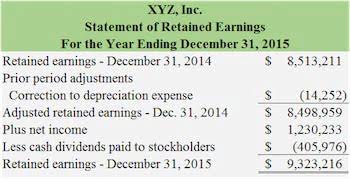- اتو لوله سبز
- اره پروفیل بر
- اره عمودبر (اره چکشی)
- اره فارسی بر
- اره گرد (اره دیسکی)
- اره مویی
- اره میزی
- اره نواری (گوشت بری)
- اره همه کاره (افقی بر)
- ابزار چندکاره
- بالابر برقی
- بتن ساب و موزایک ساب
- بکس برقی
- پیچگوشتی برقی
- پیستوله برقی
- بیسکویت زن
- چکش تخریب
- دمنده/مکنده (بلوور)
- دریل بتن کن
- دریل ساده (سرکج)
- دریل ستونی
- دریل ضربه ای/چکشی
- دریل مغناطیسی (مگنتی)
- دریل نمونه بردار (کرگیر)
- دستگاه جوش
- رنده و فرز نجاری
- سنباده برقی
- سشوار صنعتی
- سنگ دوطرفه (چرخ سنباده)
- سنگ و پولیش
- شیارزن و مرمربر
- فرز مینیاتوری
- فرز انگشتی
- میخکوب و منگنه کوب
- مینی سنگ
What is Trade Discount Example, Journal Entry
These discounts are not merely a reduction in price; they represent a negotiation and understanding between seller and buyer, where both parties stand to gain from the transaction. From the seller’s perspective, offering a trade discount can accelerate the movement of large quantities of stock, optimize inventory levels, and enhance cash flow. For buyers, these discounts mean lower costs per unit, which can translate into competitive pricing in their own markets, or higher profit margins. Essentially, a trade discount is a reduction in the listed price of goods or services offered by a seller to a buyer within a commercial context. This reduction is not recorded as a separate transaction; instead, it is deducted directly from the invoice, reducing the sale price.
Accounting for Trade Discounts
- Trade discounts can also lead to revenue loss when the negotiated terms are misapplied, broken, or misunderstood.
- Through these case studies, it’s evident that trade discounts are not just about reducing prices but are a strategic element of business negotiations and relationships.
- Schedule a meeting with a team member to see if our solution is a good fit for your business.
- By offering a trade discount, businesses essentially reduce the listed price of goods, incentivizing customers, typically retailers or wholesalers, to buy in bulk quantities.
- By understanding and leveraging trade discounts effectively, companies can not only enhance their profitability but also strengthen their position in the market.
- As we discussed above, using a trade discount calculator increases the purchase quantities.
In this example, TechGiant Electronics is offering the trade discount to incentivize retailers like SoundWave Stores to make larger orders. By ordering 180 headphones, SoundWave Stores not only stocks up its inventory but also benefits from a reduced price per headphone due to the trade discount. A distributor of merchandise may have a single catalog which displays a single price for each product. However, the distributor allows a trade discount from the catalog price based on each customer’s volume. However, a reseller will be given a trade discount of 20% from the catalog price, and will be charged $80. Lastly, a registered high-volume wholesaler will be given QuickBooks a trade discount of 27% and will be charged $73.
Example of Trade Discounts
- The discount is based on the quantity of goods or services purchased, the frequency of purchases, or any other factors that the seller considers.
- This means the buyer would receive a discount of $150 on the product, resulting in a final price of $850 ($1,000 – $150).
- Trade discounts are a critical component of B2B transactions, offering businesses the opportunity to purchase goods at reduced prices, thereby saving on costs and increasing profit margins.
- Trade discounts are also known as functional discounts, volume discounts, or quantity discounts.
On the supplier’s side, there is a shift towards dynamic pricing models that consider Accounts Payable Management real-time market data to offer competitive yet profitable trade discounts. This approach not only helps in maintaining a healthy bottom line but also in responding swiftly to changes in demand. For example, a manufacturer might use predictive analytics to offer steeper discounts during off-peak seasons to maintain steady sales volumes.
Related Entrepreneurship Terms
This incentivizes retailers like GadgetGallery to buy in bulk, reducing ElectroWhiz’s inventory while allowing GadgetGallery to sell the gadgets at a competitive price, attracting more customers. For example, a manufacturer of electronic products may offer a 10% trade discount to a retailer who purchases more than 100 units of a specific product. The trade discount allows the retailer to sell the product at a lower price while maintaining a reasonable profit margin. Trade discounts are a common practice in the business world, allowing manufacturers and wholesalers to incentivize bulk purchases, promote products, and strengthen relationships with retailers.
Company A is a manufacturer who does not sell to end-consumers but only to wholesalers, distributors, retailers and other resellers. Trade discounts are a pivotal element in B2B transactions, influencing purchasing behavior, fostering strong business relationships, and shaping financial strategies. They reflect the dynamic nature of commercial dealings, where flexibility and mutual benefit are key to sustained success. In this blog post, we will explain what trade discounts are and how they are treated in the books of accounts. Trade discounts can also lead to revenue loss when the negotiated terms are misapplied, broken, or misunderstood. Staying aware of established terms is key to accounting on both the supplier and retailer side.
From the perspective of manufacturers, trade discounts can be a powerful lever to pull when entering new markets or launching new products. By following these steps, businesses can accurately calculate trade discounts and better understand their purchasing power. It’s a straightforward process, but one that requires attention to detail to ensure all discounts are properly applied and the best possible price is obtained. In contrast to trade discounts, cash discounts are accounted for differently in the accounts, either as a sales discount (from the seller’s side) or a purchase discount (from the buyer’s side). For example, a seller may give a 2% cash discount if the buyer settles the invoice within 10 days. The discount increases with the purchase volume, making it more attractive for buyers to order in bulk.
For the a trade discount is a reduction from the list price, which is used to buyer, the primary advantage lies in the reduced per-unit cost, which can improve profit margins or allow for more competitive pricing in the market. Quantity discounts are particularly prevalent in industries where economies of scale play a significant role, such as manufacturing and wholesale distribution. For sellers, it encourages larger orders, ensures customer loyalty, and accelerates the cash flow by prompting quicker payments.









